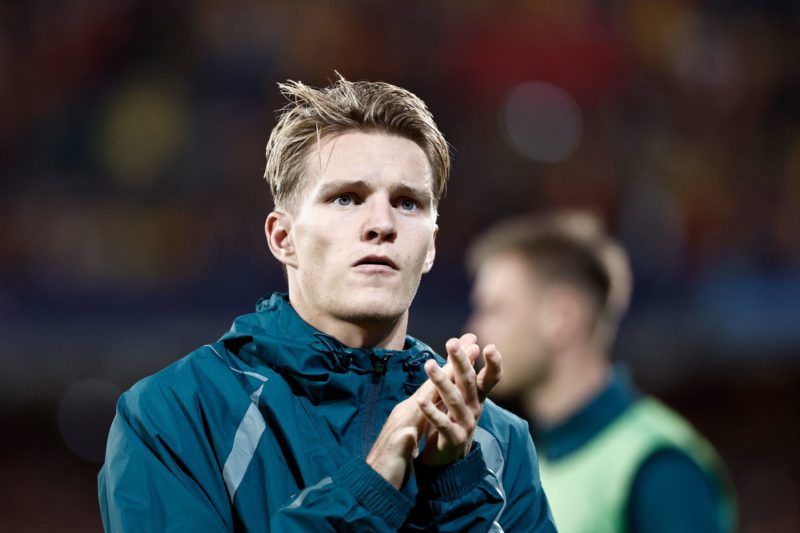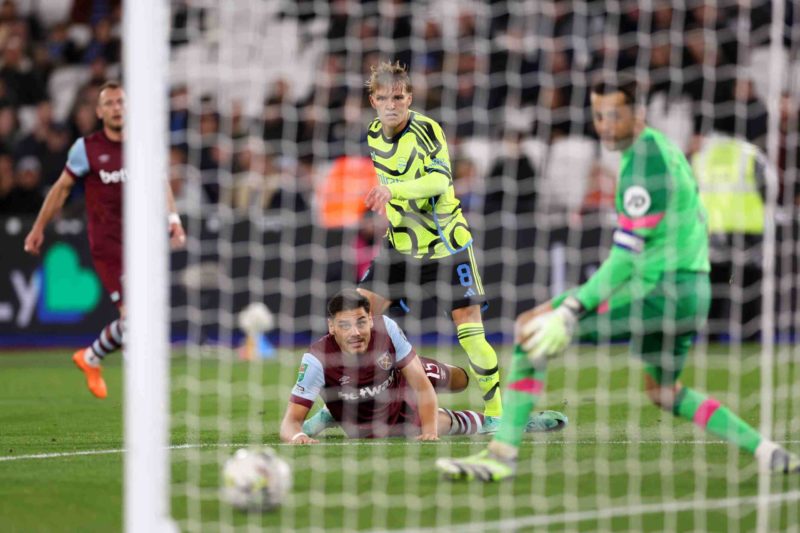The recent concussion injury suffered by Arsenal‘s Martin Odegaard during training has brought to light the critical issue of managing and recovering from concussion injuries in football.
This article delves into the protocols and importance of proper concussion management in the sport.

In the world of football, where physicality and high-speed collisions are part of the game, injuries are inevitable. Concussions, a type of traumatic brain injury caused by a bump, blow, or jolt to the head, have gained significant attention in recent years.
The recent concussion injury of Arsenal‘s Martin Odegaard during training brings this issue into the spotlight, highlighting the need for awareness and proper management of such injuries in football.
Concussion in football can occur from direct contact to the head or from a force transmitted to the head from a blow to the body.
It results in a temporary disruption of normal brain function, affecting cognitive processes, physical abilities, emotional stability, and sleep patterns.
The symptoms can be subtle and may not be immediately apparent, making it crucial for players, coaches, and medical teams to be vigilant.
Understanding concussion and its impact
Concussions are often described as ‘mild’ brain injuries because they are usually not life-threatening, but their effects can be serious.
Symptoms can include headache, dizziness, nausea, balance problems, double or blurry vision, sensitivity to light or noise, feeling sluggish, hazy, foggy, or groggy, confusion, concentration or memory problems, and just not “feeling right”.
For footballers like Odegaard, the immediate concern post-concussion is the well-being and long-term health of the player.
The brain needs time to heal, and rushing back to play can be detrimental. Second Impact Syndrome, where a second concussion occurs before the first one has properly healed, can lead to severe brain injury or even death.
Protocol for concussion management
The management of concussions in football has evolved significantly. The “if in doubt, sit them out” approach is widely advocated.
Arsenal, like many other clubs, follows a strict protocol when dealing with concussions. This includes immediate removal from play if a concussion is suspected, a thorough evaluation by medical professionals, and a gradual, step-by-step return to play protocol.
The return to play protocol involves several stages, starting with a period of rest until symptoms resolve. This is followed by a gradual reintroduction to physical activity, starting with light aerobic exercise, then progressing to sport-specific exercises, non-contact training drills, full contact practice, and finally return to game play.
Each stage must be completed without the recurrence of any symptoms before moving to the next.
The importance of recovery and rest

Recovery from a concussion varies from player to player.
Some may recover in a few days, while others may take weeks or longer. The key is to allow ample time for recovery.
Rest, both physical and cognitive, is crucial in the initial stages post-injury.
Players are advised to avoid activities that require concentration and attention as these can exacerbate symptoms.
Long-term considerations
In recent years, there has been growing concern about the long-term effects of repeated concussions, including chronic traumatic encephalopathy (CTE), a degenerative brain disease found in athletes with a history of repetitive brain trauma.
This has led to increased research and changes in how sports, including football, approach concussions.
Raising awareness and education
Education and awareness are crucial in managing concussions effectively.
Players, coaches, and parents need to be educated about the signs and symptoms of concussion, the importance of reporting injuries, and the protocols for safe return to play.
This awareness can lead to a culture change where player health is prioritised, and injuries are managed appropriately.

